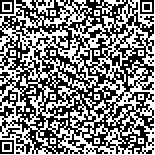| 引用本文: | 王雨豪,陈文刚,吴华杰,尹红泽,井培尧,王泽霄,郝星星.空化作用及气泡行为轨迹观测研究进展[J].中国表面工程,2023,36(1):12~29 |
| WANG Yuhao,CHEN Wengang,WU Huajie,YIN Hongze,JING Peiyao,WANG Zexiao,HAO Xingxing.Research Progress of Cavitation and Bubble Behavior Trajectory Observation[J].China Surface Engineering,2023,36(1):12~29 |
|
| |
|
|
| 本文已被:浏览 889次 下载 377次 |

码上扫一扫! |
|
|
| 空化作用及气泡行为轨迹观测研究进展 |
|
王雨豪1,2, 陈文刚1,2, 吴华杰1,2, 尹红泽1,2, 井培尧1,2, 王泽霄1,2, 郝星星1,2
|
|
1.西南林业大学机械与交通学院 昆明 650224;2.云南省高校高原山区机动车环保与安全重点实验室 昆明 650224
|
|
| 摘要: |
| 随着对空化现象的不断探索,已经有较多研究结果表明空化作用对摩擦副的减摩抗磨性能有促进作用,但由于空化现象的复杂性及难以直接观测,目前对其机理尚未取得共性结论,仍须进行深入研究。通过概述近年来对空化现象所做的相关研究,归纳气泡在溃灭过程中对壁面的空蚀损伤机理等,引出三种适用于基体表面的热门减摩方法,包括表面微织构、表面涂层和添加颗粒物。重点综述三种方法在不同结构、材料、形状、尺寸、分布方式等下对空化气泡行为轨迹的影响,以及在与其他效应相耦合下空化效应所起到的减摩效果,对相关研究进行整体归纳,并指出其中存在的问题和不足。最后提出搭建一个自动化试验装置,用于观测模拟水利机械装置工作过程中液体介质接触表面所产生的空化气泡溃灭的过程,填补该过程中气泡行为轨迹观测的欠缺,为表面空化减摩的研究奠定基础。 |
| 关键词: 空化 气泡行为观测 表面改性 机器视觉 |
| DOI:10.11933/j.issn.1007?9289.20220314001 |
| 分类号:TH117;TH117 |
| 基金项目:国家自然科学基金(51865053)和国家外专局(G2021039004)资助项目 |
|
| Research Progress of Cavitation and Bubble Behavior Trajectory Observation |
|
WANG Yuhao1,2, CHEN Wengang1,2, WU Huajie1,2, YIN Hongze1,2, JING Peiyao1,2, WANG Zexiao1,2, HAO Xingxing1,2
|
|
1.School of Mechanical and Transportation, Southwest Forestry University, Kunming 650224 , China;2.Key Laboratory of Vehicle Environmental Protection and Safety in Plateau Mountainous Areas of Yunnan Province, Kunming 650224 , China
|
| Abstract: |
| Surface damage caused by the cavitation phenomenon is the predominant cause of wear and aging of mechanical equipment. Cavitation damage caused by this phenomenon was identified as early as the 19th century, however, limited by the scientific and technological level of that time, cavitation theory was not systematically considered until the early 20th century, and a single bubble dynamic model was established. Cavitation phenomenon research has also made significant progress owing to the development of high-speed cameras and computer technology. For example, high-speed cameras are used to track and observe bubble behavior trajectory in the cavitation process, and computers are used to simulate the numerical model. Both complement and promote each other, which plays a pivotal role in studying the cavitation phenomenon. With continuous exploration of this topic in recent years, although the cavitation phenomenon and direct observation of bubble behavioral trajectories is complex, research results have increasingly demonstrated that cavitation bubbles reduce friction and produce lubrication under certain conditions. Thus far the lubrication effect mechanism produced by the cavitation effect has not reached general conclusions, therefore, further in-depth research is required. Related research on the cavitation phenomenon was systematically summarized in this study, which includes observation of the entire process from cavitation bubble generation to bubble breakup and interaction. The causes and impact of microfluidic formation is elaborate, the influence of the different liquid mediums are explored. Simultaneously, the bubble breaking process at the wall of different shapes alongside the cavitation erosion damage mechanism is summarized. Based on the summary of bubble behavior trajectory research, the special lubrication effects produced by several traditional friction reduction methods applied to the matrix surface under the coupling effect of the cavitation effect are introduced. This includes the surface micro-texture, surface coating, adding particles, the effects of three methods on the behavior trajectories of cavitation bubbles under different structures, materials, shapes, sizes, and distribution modes, and the friction-reducing effects of the cavitation effects coupled with other effects are predominantly reviewed. First, considering the surface microtexture, the researchers through the method of bionic and creative design designed much different structure shapes and sizes of texture structure of anti-friction lubrication research. Related research results demonstrated that the cavitation bubble in some special cases produces the lubricating effect, this phenomenon is known as the dynamic pressure effect. It guides subsequent research on the friction-reducing lubrication effect of new micro-textures, including behavior trajectory of cavitation bubbles near the micro-textures, and mechanism research on the friction-reducing lubrication effect. Second, an overview is presented of early stage surface coatings, and those predominantly focused on the corrosion resistance of materials used, by constantly updating coating preparation technology and combining it with surface texture research, the resistance and impact of cavitation damage by different materials and coating structures was studied. Last, an overview is presented on adding particulate matter, as this has a significant impact on the cavitation phenomenon under certain conditions, and also interacts with the behavior trajectory of cavitation bubbles. Relevant studies are summarized and current challenges elucidated. Finally, a discussion is presented on how to build a highly automated bubble simulation experiment device. This device could be used to observe the simulated working process of water conservancy machinery on a liquid medium contact surface produced by the cavitation bubble breaking process. Subsequently, based on experimental results of three types of anti-friction, to help fill the gap in bubble behavior trajectory observation, the foundation may be laid for the study of surface cavitation friction reduction. |
| Key words: cavitation observation of cavitation behavior surface modified technique machine vision |
|
|
|
|

